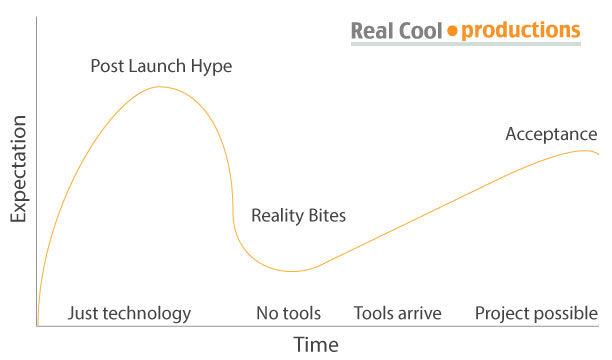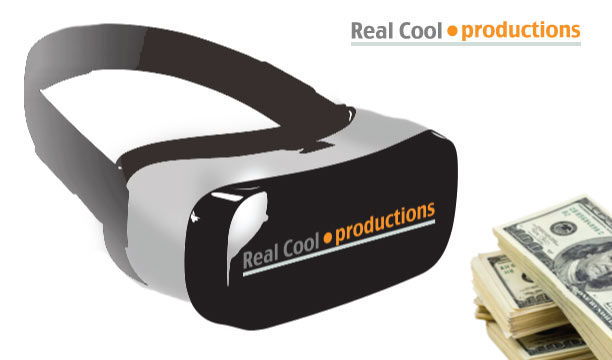Here’s why you might want to think twice before jumping on the VR bandwagon. First, because it’s not a bandwagon, it is just a bunch of technology and second, because of the reasons below.
There has been a lot of great developments in video technology over the last ten years, some good and several
 pretty bad. Notably, we’ve suffered through wearing 3-D glasses, have been made sick by 360° filming and have had our hair cut by low-flying drones. If you are honest, have any of these technological advances helped you with your everyday training needs? Probably not.
pretty bad. Notably, we’ve suffered through wearing 3-D glasses, have been made sick by 360° filming and have had our hair cut by low-flying drones. If you are honest, have any of these technological advances helped you with your everyday training needs? Probably not.
There is a fairly typical trend with any new technology; it starts with the hype, builds to a crescendo as very early technology launches and then falls flat on its face as end users struggle to find the real purpose for it. Whether it ever gets up again is anyone’s guess.
Wisdom of the Ages: “Virtual Reality” A fairly plausible explanation for the abundance of Virtual People running around these days. ― Matthew Heines
VR is a particular case. It cannot just be slotted into a content development plan. Several things currently make it impractical for every day training. It might work for the military or an exciting Hollywood project, but has little place in training employees how to go about their business in a professional and knowledgeable manner.
Let us break it down:
1. Cost
 The individual headsets are still expensive at around $700 (there are cheaper option, but you get what you pay for). The computer hardware required for delivering the experience is also not insignificant. The planning and content requirements are exponentially more complicated than regular video or animations.
The individual headsets are still expensive at around $700 (there are cheaper option, but you get what you pay for). The computer hardware required for delivering the experience is also not insignificant. The planning and content requirements are exponentially more complicated than regular video or animations.
One of the things that has changed video based training has been the learners willingness to use their own devices to view training material. It is clearly a step backward if an organization needs to provide an expensive studio style environment to conduct training. The whole point of web-based training, in particular, is it is low-cost, and that it can be easily replicated as viewers watch on many different kinds of devices in many different locations.
2. Technology
The thing about video production in today’s web-centric world is the abundant supply of high-quality software tools and vendors that are capable of delivering the components needed to create useful, reasonably priced training content.
The tools for VR development are pretty rustic and “add-ons” to enhance productions are almost non-existent. Obviously, over the coming months and years additional and approachable tools will appear making this a more viable medium for corporate use.
The more time we spend interconnected via a myriad of devices, the less time we have left to develop true friendships in the real world. ― Alex Morritt
3. Your career
There is a little bit of nerd in all of us. Maybe you fancy yourself as the next Steven Spielberg of the VR world. Of course, that is not what we get paid to do. This kind of technology is incredibly time-consuming and at the same time absorbing. Achieving a successful project is no doubt very rewarding, but is not much help at your annual review when you have only finished one project and spent a great deal of your budget on it.
Conclusion
Hang on awhile and let the technology grow up. Remember that BYOD and web-based training has helped us get where we trainers are today. Be ready for VR. If it survives the stern gaze of the gaming public and eventually makes it into the mainstream and you want to use it – your day may come.
A different viewpoint
If you would like to hear the other side of the story try these links:
Virtual Reality: It’s not just for gamers anymore
Beyond Gaming: 10 Other Fascinating Uses for Virtual-Reality Tech

Leave A Comment